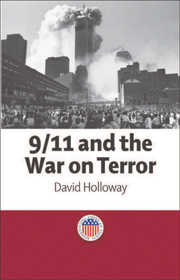Book contents
- Frontmatter
- Contents
- List of Illustrations
- Series Editors' Preface
- Acknowledgements
- Introduction
- 1 History
- 2 Politics
- 3 Mass Media
- 4 Cinema
- 5 Literature
- 6 Photography and Visual Art
- Conclusion
- Appendix A Timeline
- Appendix B Synoptic biographies
- Annotated bibliography of further reading and texts cited
- Index
6 - Photography and Visual Art
Published online by Cambridge University Press: 05 August 2013
- Frontmatter
- Contents
- List of Illustrations
- Series Editors' Preface
- Acknowledgements
- Introduction
- 1 History
- 2 Politics
- 3 Mass Media
- 4 Cinema
- 5 Literature
- 6 Photography and Visual Art
- Conclusion
- Appendix A Timeline
- Appendix B Synoptic biographies
- Annotated bibliography of further reading and texts cited
- Index
Summary
‘Convulsions of empire’ and ‘adventures in cubism’. Visualising republican culture after 9/11
On 9/11 the pioneering internet artist Wolfgang Staehle recorded the attacks on the World Trade Center by mistake, as part of a live webcam art exhibit at the Postmasters Gallery, New York. Staehle pointed ‘live’ web-cameras at three locations around the world, one of which showed a panoramic view of lower Manhattan, and displayed the feeds as big-screen video projections. By the beginning of the end of the ‘republican crisis’ in 2006 (see Chapter 2), Staehle's accidental engagement with 9/11 looked like an increasingly persuasive metaphor for artworld responses to the attacks. If one notable trend in non- cinematic visual culture about 9/11 and the war on terror during the Bush years was the central role played by diverse forms of photography in public discussion of events, another was the relative marginality of the artworld. Professional and amateur photographers played a key role in recording 9/11, particularly at the World Trade Center, where the multiplicity of images made from every conceivable angle saturated the media sphere with such a synchronic surfeit of imagery that one contemporary commentator felt moved to label it ‘a welcome adventure into cubism’ (Ritchin 2002: 41). In the pictures of missing friends and relatives pinned to lampposts, newspaper stands and buildings in Manhattan (Figure 6.1), in the images broadcast globally by television, internet and traditional print media and in the major collections and books that followed, photography functioned as an overtly public culture.
- Type
- Chapter
- Information
- 9/11 and the War on Terror , pp. 129 - 153Publisher: Edinburgh University PressPrint publication year: 2008



